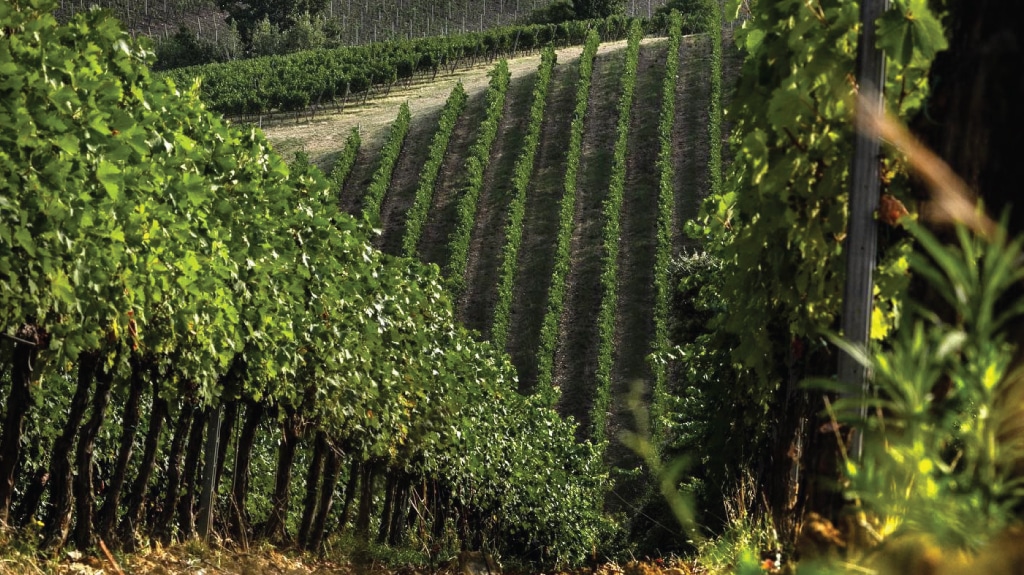How wineries control wildlife in their vineyards

You’ve probably heard of queleas stripping fields of wheat, elephants trampling maize, or rabbits ruining the radishes; but spare a thought for grape growers around the world. These dedicated viticulturists tend their grapevines lovingly against extremes of weather, fungus, rot, and hordes of insect pests, nurturing the fruit to peak ripeness in order to create our favourite wines. But all this hard work can be undone in a moment if animals enter the vineyard to feast on the vines. So how do wineries tackle the problem of controlling wildlife in their vineyards?
Friend or foe?
Firstly, it has to be said, not all wildlife poses a threat to grape vines. Some animals are even beneficial to the cultivation of grapes – more on that later. But grape growers can’t wrap their vines in cotton wool or steel cages to guard against invaders looking for an easy feed. In extreme cases, the whole crop can be lost; for example raccoons destroyed an entire harvest near Brandenburg, Germany, in 2005. This would be a devastatingly costly blow to any vineyard.
Wildlife found in vineyards
All over the world, birds and rodents such as rats, mice and squirrels love to eat grapes; after all, why wouldn’t they? Grapes are full of sugar, nutrients and water, perfectly presented in a small, neat package; just the right size for a quick snack or to take back to your nest to feed your children. Other grape guzzlers around the world include baboons, bears, wild boar, deer and even kangaroos!
But it’s not just the grapes at risk; deer also favour the shoots and leaves, and in South Africa baboons not only target the fruit but also the young shoots. In North America gophers like to eat the roots and can severely damage new vines.
Wildlife control using chemicals
Historically, vineyard operators have used chemical repellants sprayed onto the leaves or fruit; these produce a foul smell or taste to deter birds and deer. Poison baits control rodent populations. However it’s vital that these methods are implemented in a way that does no harm to the vines themselves or to the grapes that are eventually turned into wine. Many vineyards prefer more humane and environmentally acceptable methods of pest control.
Wildlife control using non-chemical means
Physical barriers and other alternatives to chemicals
Modern methods of wildlife control in vineyards include bird netting as a physical barrier to keep birds off the vines; “grow tubes” to deter browsing animals; and appropriate fencing to keep out larger animals. Some vineyards even allow hunting (for example, deer).
“Bird scarers” – usually a propane gas cannon that makes a very loud bang – scare away birds and also startle deer. Reflective ribbons work to keep birds off the grapes, at least for a while. Automated moving laser beams are a state-of-the-art bird deterrent used in a very few vineyards; this system acts to confuse birds into thinking there is a physical barrier or object moving amongst the vines.
There are “home remedy” type deterrents too; natural odour sprays such as garlic juice can help to keep some animals off the vines.
Like farms, some vineyards keep outdoor cats as “mousers” to control rodent populations; and patrolling with dogs can also help, as the dog’s scent will often deter small creatures such as rabbits and mice.
Beneficial wildlife
Not all wildlife visiting the vineyards is looking for grapes; some animals are instead looking for grubs and insects amongst the leaves. Organic vineyards welcome and encourage insect-eating birds for this reason. And territorial insect-eating bird species will even chase any incomers away, large or small. Armadillos, too, eat harmful insects and have recently returned to some Patagonian vineyards.
Some wineries keep sheep to control grass and weeds under the vines; not exactly “wildlife”, but free range animals, nonetheless. Geese and chickens can also provide the same service, with chickens additionally feeding on invertebrate pests. Many European and North American wineries either employ or encourage falcons, owls and other birds of prey to keep rodent and small bird numbers under control.
Environmentally responsible wildlife control in vineyards
Perhaps the best strategy for controlling pesky wildlife in vineyards is to employ a combination of two or more of these non-chemical methods at the same time; that way, damage to the crop is limited with minimal impact on the environment. As consumers, we can also influence how wineries manage wildlife by choosing wines made using control methods we are most comfortable with.
Here at TWB Cellar Limited, we prefer to source wines from wineries that try to use environmentally responsible practices throughout their operations; whether this encompasses organic production methods, reduced carbon footprint, social responsibility, or how they manage wildlife on their property. In terms of pest control, the tide is turning in favour of non-chemical methods where possible. Many wineries have already started converting their operations to more sustainable production methods; for some, they are just beginning the journey, and we wish them every success.

